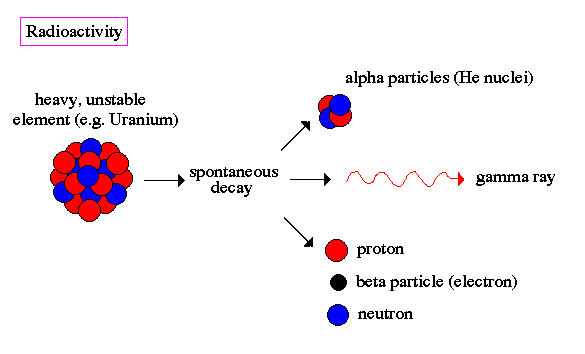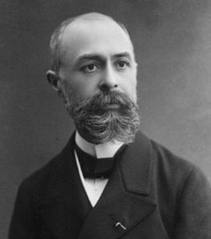Blog Post
How Much Radiation Does It Take Two Kilomockingbird?

Feeling bombarded with confusing information about measures of radiation? We sort out the millisieverts from the becquerels.
What is the measure of the time between slipping on a peel and hitting the pavement?
One bananosecond.
What is the ratio of an igloo’s circumference to its diameter?
Eskimo pi.
SUPPORT INDEPENDENT SUSTAINABILITY REPORTING
BuildingGreen relies on our premium members, not on advertisers. Help make our work possible.
See membership options »What is the metric equivalent of 1,000 aches?
1 megahurtz.
What is the metric equivalent of 2,000 mockingbirds?
Two kilomockingbirds.
Tortured by dead physicists?
To those who feel tortured by puns, I apologize. I’ve been feeling a bit tortured myself by news reports coming out of Japan, and specifically, the code language that surrounds radiation. The numbers themselves are usually very small and difficult to visualize, they are denoted in unfamiliar units named for dead European scientists, and just when I think I’ve mastered one, another shows up in the news.
In the interest of being more informed about what we’re being exposed to, both in Japan and in nuclear plants closer to home, I, your fearless Energy Solutions columnist, will now attempt to decode them.
Waiter, there are becquerels in my water
Radioactivity comes from the decay of large atoms like uranium. As uranium atoms break down, they give off energy in the form of radioactive particles. These particles are also atoms, and themselves tend to be radioactive and subject to further decay.
We can measure the number of decay reactions going on in a given amount of radioactive material in terms of curies, named for Marie and Pierre Curie, who pioneered and named the study of radioactivity. One curie equals 37 billion disintegrations per second. Because one curie represents a lot of radioactive material, we often hear about a picocurie, or one-trillionth of a curie. The U.S. Nuclear Regulatory Commission has a limit of 20,000 picocuries per liter of drinking water.
Curies are a non-metric unit that, like inches and feet, aren’t preferred in international science. The preferred term is the becquerel (Bq), which refers to the activity of a quantity of material in which there is one decay per second. Like the Curies, Henri Becquerel was a Frenchman who studied radioactivity; he shared with them the 1903 Nobel Prize in Physics.
We heard a lot about becquerels when there turned out to be too many of them in the Toyko drinking water—more than 100 becquerels of iodine per liter, the safety limit for infants.
I have been puzzled, though, over how one can refer to a precise quantity of radioactive material in water in terms of becquerels or picocuries. These units refer to a rate of radioactive decay per second, not a quantity of material. In other words, referring to the number of becquerels in a glass of water is like referring to the number of miles-per-hour between two Interstate exits.
You can derive the number of miles between those two exits if you can measure the time (in hours) it took you to travel between them, and if you know your speed. In the same way, scientists can get a read on the number of radioactive particles in a glass of water by taking the rate of radioactivity they are reading (in becquerels) and doing math based on time of exposure and other factors. However, I can’t explain why they refer to both rate and quantity as becquerels, effectively not distinguishing between miles and miles-per-hour.
How much are we exposed to?
While the becquerel tells us about the radioactive matter, other measures tell us how much radioactivity we may be exposed to. The gray (named for Louis Harold Gray) measures the deposited energy of radiation on one’s body. One gray is the equivalent of absorbing the energy of one billion decayed uranium atoms per gram of body mass.
A similar measure to the gray is the sievert. The sievert is named for a Swedish physicist who studied how radiation is absorbed by the body. The sievert, in contrast with the gray, is an “effective dose” that factors measures like the type of tissue absorbing the radiation. Around nuclear power, the gray and the sievert mean pretty much the same thing, but the sievert is more widely reported. (Both units, gray and sievert, effectively replace rad and rem, older inch-pound measurements that you still see in places.)
A sievert is a very, very large dose, so it turns out the doses we really care about are measured in millsieverts (mSv), or thousandths of a sievert. These measurements are highly relevant inside a nuclear plant or other zone of contamination (like Chernobyl), because they indicate to an emergency worker how much exposure he is getting. In the case of off-the-charts readings, they also indicate a worrisome amount of contamination. In one recent incident at Fukushima, we heard of a technician turning and running after the meter in his hands maxed out at 1,000 millisieverts (or one whole sievert).
Rate versus dose
When thinking about millisieverts, it’s crucial to watch the time factor. We know from incidents of measured radiation poisoning that a dose of 5,000 mSv is reliably fatal. But how long does it take to accumulate such a dose? Readings of mSv are usually given in per-hour metrics, as with the unfortunate technician who was reading more than 1,000 mSv per hour.
Exposure to a 1,000 mSv reading for an instant is not likely to be harmful. But take your cue from that technician, and don’t stick around! That fatal dose of 5,000 mSv could accumulate in just five hours of exposure to 1,000 mSv per hour conditions, or in a month’s work of exposure to 7 mSv per hour. Radiation close to the Fukushima reactors was measured at 400 mSv/hour at one point, and was at 8 mSv/hour at the gate of the plant.
Chest x-rays and bananas
We often hear reassurances from authorities that radiation being emitted from a nuclear plant is much less than in a chest x-ray, or that which you receive from a transcontinental flight. These reference points seem to have become units in their own right—you may hear that a dose was half of that received in a chest x-ray. How much is that?
A regular chest x-ray gives 0.1 mSv—truly small. A CT scan gives you as many as 30 mSv, so while doctors are very soothing about radiation from x-rays, they are much more cautious with CT scans, particularly around infants and children. That flight from New York to L.A. will give you a dose of about 0.03 mSv. You may be exposed to about 1 mSv/year through average background radiation, meaning that it would take 5,000 years to accumulate a serious dose.
Speaking of bananoseconds, that's how long you should stick around and listen to someone who tries to soothingly explain radiation in terms of something called the Banana Equivalent Dose, or BED. A public relations brainstorm, the BED is supposed to represent the amount of radiation you are exposed to from a banana, and thus offer an understandable and benign comparison with things like living near a nuclear plant. The measure is based on poor assumptions about how much potassium in bananas is radioactive (not much), and how the body metabolizes that potassium (very different than how it metabolizes radioactive strontium from nuclear fuel).
Contamination versus radiation
One worrisome aspect of the Fukushima crisis, and the way in which government officials and the media have communicated about it, has been lack of clear information about contamination, as opposed to radiation.
The amount of radiation you receive from a radioactive particle gets much smaller as you get further away from it. If you were in a large room with a tiny particle of plutonium, for example, your Geiger counter might not pick up much radiation. On the other hand, if you breathed that same particle into your lungs, and it became lodged against a group of your cells, those cells would be bombarded with a lot of radiation, particularly relative to their mass.
When particle contamination is a risk—as with, say, explosions of reactor buildings— authorities should be keeping us very informed about what kind of contamination might be present in the air and on the ground—iodine, cesium, plutonium, and others—in addition to levels of radiation that are present.
Your questions answered

Dear Energy Solutions, Is PV a viable solution in the northern U.S.? – Angela in Vermont
As proof that it can be done, my home in Vermont is completely “off the grid” in terms of electricity. All of our (modest) electrical needs are served by our 1.1-kilowatt photovoltaic array, with juice to spare under this cold March sun. However, PV is an investment measured for most households in of tens of thousands of dollars. Not only is that difficult to afford for many people, but it would take decades for the average homeowner to pay back in savings (in current utility rates) an investment in PV. For me, the payback was instant because my home is a half-mile from the power line and the cost of bringing that in would have been greater.
More on this and other energy solutions in future columns—keep those questions coming.
Images: Radioactivity illustrated; Henri Becquerel
Published March 29, 2011 Permalink Citation
(2011, March 29). How Much Radiation Does It Take Two Kilomockingbird?. Retrieved from https://www.buildinggreen.com/news-article/how-much-radiation-does-it-take-two-kilomockingbird



Add new comment
To post a comment, you need to register for a BuildingGreen Basic membership (free) or login to your existing profile.